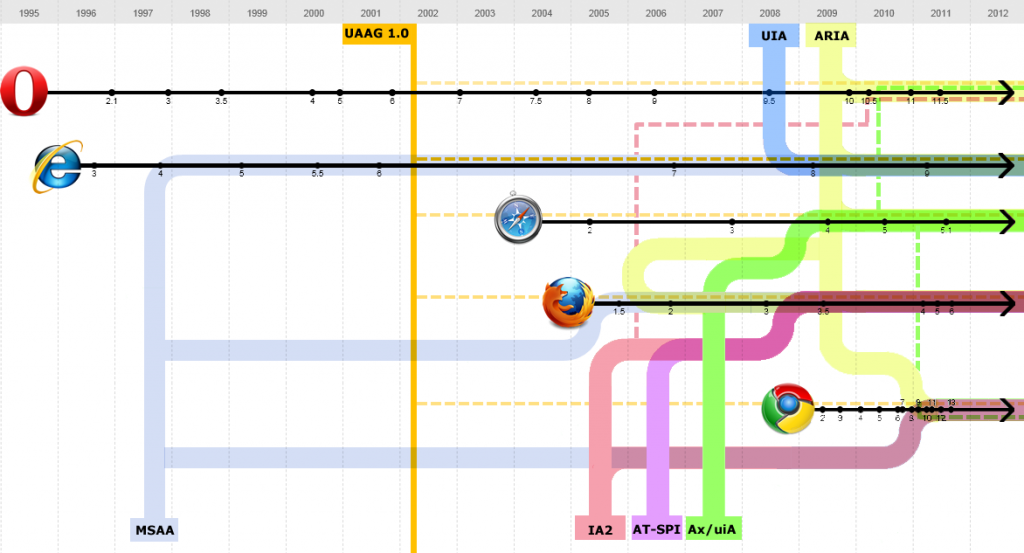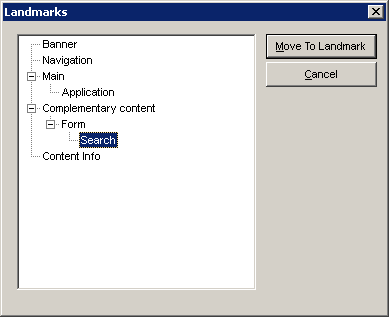HTML5 semantics and accessibility
This is a comment I made on the article Pursuing Semantic Value The author requested that I post it separately, so I have.
Upcoming Webinar: July 16 at 12 PM ET. Creating Accessible Social Media Content: Designing for Connection and InclusionRegister Now
The latest in accessibility law, strategy, program management, and news, as well as upcoming events, and articles on web development issues, techniques, design patterns, auditing, WCAG, and resources of a technical nature.
This is a comment I made on the article Pursuing Semantic Value The author requested that I post it separately, so I have.
November 14, 2011 | Technical
I received an email from an old friend and colleague pointing out that with images disabled in the browser, the support information in the data tables on HTML5Accessibility.com disappears. An…
October 21, 2011 | Technical
A number of issues are being debated in accessibility circles at the moment. These primarily revolve around how browsers and assistive technology interpret and represent HTML semantics via accessibility APIs…
October 17, 2011 | Technical
One thing that should be obvious to anybody who has read my recent posts Rough Guide: browsers, operating systems and screen reader support and a Brief history of browser accessibility…
October 14, 2011 | Technical
I am always looking back through the TPGi blog archives to find tests I have done in the past, as often I have forgotten where the tests reside. To remind…
October 6, 2011 | Technical

The development of a ‘Brief history of browser accessibility support‘ was prompted by Google’s Evolution of the Web interactive infographic. I was dazzled by its coolness, but noticed that amongst…
October 5, 2011 | Technical
Back in 2009 I wrote Google Chrome Frame – accessibility black hole, now 2 years on what has changed? This quick revisit has been prompted by some recent tweets.
September 23, 2011 | Technical
The figure and figcaption elements are 2 of the new elements in HTML5. Together they provide the promise of being able to mark-up, with meaning, the structure and relationship between…
August 23, 2011 | Technical
The W3C HTML5 specification contains an SVG (Scalable Vector Graphics) based interactive Venn diagram. The diagram illustrates the relationship between HTML content categories. Currently the content and interactivity of the…
August 17, 2011 | Technical
Bits & Bobs about web accessibility.
August 2, 2011 | Technical

The ARIA landmark roles can be used in HTML5 to markup regions of a page. Landmark roles add a new means to navigate page content for users of supporting assistive…
July 11, 2011 | Technical
There are 2 methods of labelling a form control using the HTML label element. You can wrap the control inside the label element or you can include the for attribute…
July 4, 2011 | Technical
As part of our ongoing effort to provide our clients and associates with valuable accessibility information, TPGi wants to let you know of recent activity by the United States Department…
July 1, 2011 | Technical
We have been working on bug fixes to the Web Accessibility Toolbar 2011, the update is now available for download, includes the latest version of aViewer.
June 29, 2011 | Technical
Refer to: aViewer 2013
June 28, 2011 | Technical
It is conforming in HTML5 for links to include block level elements such as headings and paragraphs, this was forbidden in previous versions of HTML. A recent article by @feather…
June 17, 2011 | Technical
HTML is currently defined in multiple documents, each purporting to be THE definition of HTML/HTML5. The documents are developed, published and maintained by 2 separate organisations. The 2 organisations have…
June 13, 2011 | Technical
I tweeted the other day, suggesting people switch to the HTML5 doctype as the use of ARIA is conforming in HTML5. As things stand, if ARIA roles, states and properties…
June 2, 2011 | Technical